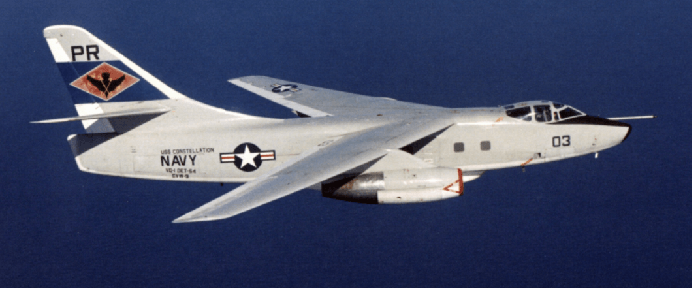The now-defunct US aerospace giant, Douglas Aircraft Company, had developed “A3D Skywarrior”, a carrier-capable strategic bomber, a few years after World War II. The Skywarrior was the US Navy’s first-ever twin-jet nuclear bomber which had the ability to land on carriers despite its heavyweight.
China Finds Answer To US’ B-21 Raider – The Mysterious JH-XX Stealth Fighter-Bomber – WATCH
Commonly known as the ‘Whale’, the A3D Skywarrior could be launched by catapult or JATO assisted take-off thrust bottles. However, landing on the carrier was always a tricky business, and with there no ejection seats on the aircraft, the ‘A3D’ was called ‘All 3 Dead’.

In 1949, Washington gave a contract to Douglas Aircraft Company to develop a carrier-based bomber with the capability to carry nuclear payloads. Douglas was picked among the eight other aircraft companies that would later merge with McDonnell Aircraft to become McDonnell Douglas in 1967.
Unlike the designs of the other companies which had aimed for a 100,000 lb (45,000 kg) maximum take-off weight, Douglas’ Skywarrior would be developed with a take-off weight of just 68,000 lb (31,000 kg), enabling it to be launched from the US Navy’s existing Midway-class aircraft carriers.
Major parts of the aircraft were produced by Westinghouse Electric Corporation, which included the below-par Westinghouse J40 turbojet engines installed earlier. The engines were later replaced by Pratt & Whitney J57 engines in 1953.
Around 282 Skywarriors were built by Douglas, with the first production version being a three-manned variant, called the A3D-1. The aircraft, which entered service with the Navy Heavy Attack Squadron One in 1956, had a radar-controlled tail turret.
However, developing a nuclear bomber was a challenging task.
According to Boeing, “The project was challenging because anything to do with nuclear armament was top secret, and designers had to guess the appearance and weight of the nuclear bombs to be carried aboard. Moreover, the internal bomb bay had to be accessible from the cockpit so that the crew could arm the nuclear device during a flight.”
During its 30 years of service, the aircraft had an extensive combat history including Operation Desert Storm as well as its bombing missions over North and South Vietnam, where the Skywarriors were used as carrier-based aerial-refueling tankers and as reconnaissance aircraft covering the Ho Chi Minh trail.
According to the Pearl Harbor Aviation Museum’s website, “From Vietnam to Desert Storm — the A3D changed roles and became a star. In Vietnam, the bomb bay carried electronic surveillance equipment and fuel for other aircraft, sometimes accomplishing both on the same sortie. Skywarrior tankers extended the striking range of the air wing.”
“Electronic Whales tracked enemy movements, intercepted radio transmissions, and jammed radar to protect aircraft in the air. Four electronic specialists, called crows or ravens joined the crew (later replaced by automation). The Skywarrior was among the longest-serving carrier-based aircraft in history.”
However, despite advancements in technology making its old role obsolete, the Skywarrior continued being adapted to fulfill other roles which included electronic countermeasures, photographic reconnaissance, as crew trainers, and even as a VIP transport.
The aircraft was later modified with a much-strengthened structure for higher altitudes as well as ejection seats, with the new version being called the Destroyer.
“The revised US Air Force version of the Skywarrior was named the Destroyer and designated the B-66. Douglas built 294 B-66 Destroyers. In speed, range, and capacity, the B-66 twinjet met all tactical requirements for delivering the most potent weapons. The RB-66 was modified for use in night photo, electronics, and weather reconnaissance,” according to Boeing.